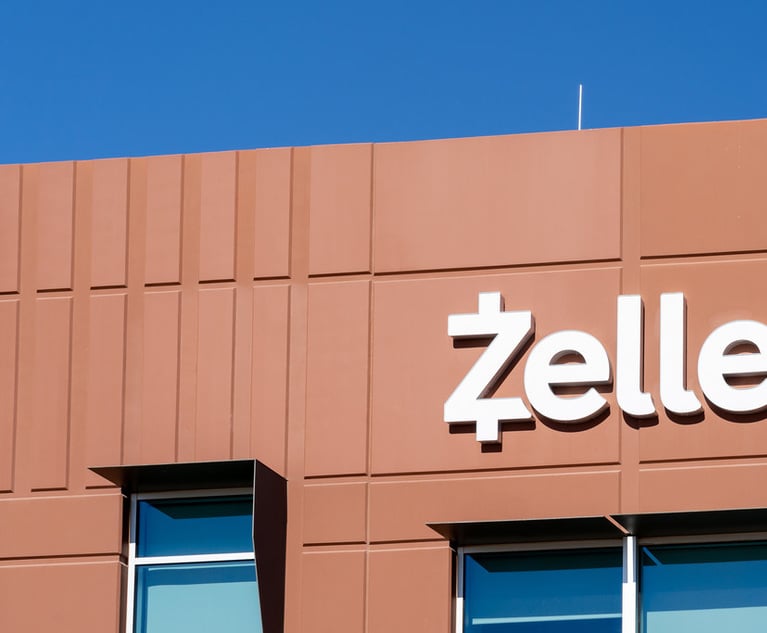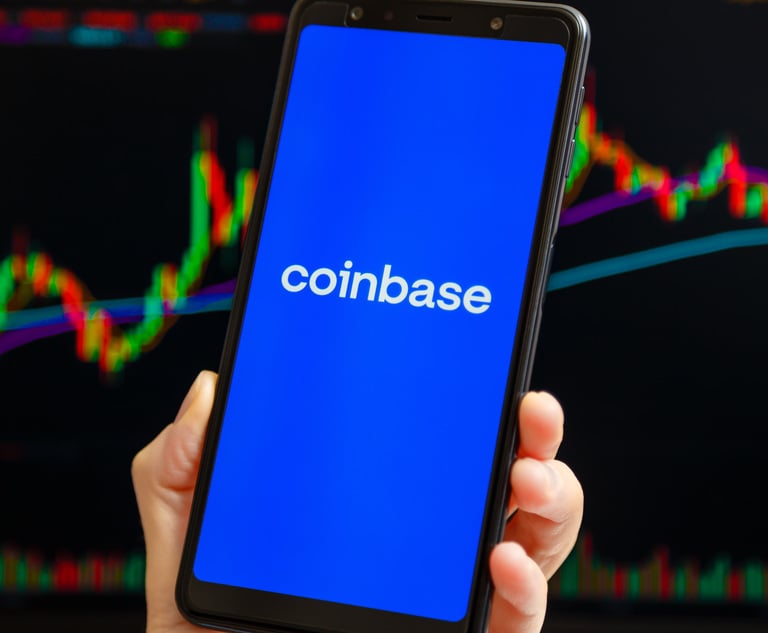Discovery Stalemate
There's no silver bullet to end the burdens caused by e-discovery.
April 30, 2007 at 08:00 PM
5 minute read
They looked like caged animals as they sat in front of rows of flat-screen computer monitors in a dark, glass-enclosed conference room. None of the 20 people in the room was speaking. They were just staring at their screens, which were the only source of light in the room.
My friend, who works at a large D.C. law firm, explained that these people were staff attorneys who were reviewing electronic documents for a major case. She said a staff attorney is basically an associate who had fallen off the partnership track. They appeared to be living in legal purgatory.
Sadly, this may be the future many young lawyers face. At least that's the impression I got from a panel of experts who recently spoke at an e-discovery summit hosted by H5, a legal technology provider. The panelists included in-house lawyers and academics. The star attraction, though, was Supreme Court Justice Stephen Breyer.
The panel spoke at length about the crushing blow of e-discovery–both from a time and cost perspective. A lawyer from Verizon mentioned a case in which his client racked up $4 million in document review costs alone. That number surprised Justice Breyer, who expressed concern that e-discovery costs will soon close the courts to everyone except the wealthiest companies. As we reveal in this month's cover story, arbitration is heading in the same direction.
Unfortunately, the panel offered few solutions. Most agreed that the key to solving the problem was for plaintiffs and defendants to collaborate on limiting the scope of their requests. But few, I think, actually believed that was possible.
Justice Breyer said judges need to insert themselves more into the e-discovery process–setting parameters on how electronic files should be culled and searched. But he warned the lawyers in the room that they may not be too pleased with the results. And he's probably right. Most judges are like Justice Breyer, who admitted to having a limited understanding of the complexities of searching and producing electronic data.
In the end, there's no silver bullet. E-discovery simply has become part of the cost of doing business in America. The bad news, though, is that those costs will continue to increase. A recent study estimated that people created enough digital information last year to fill 12 stacks of books that would reach from Earth to the sun.
I am glad I am not a staff attorney.
They looked like caged animals as they sat in front of rows of flat-screen computer monitors in a dark, glass-enclosed conference room. None of the 20 people in the room was speaking. They were just staring at their screens, which were the only source of light in the room.
My friend, who works at a large D.C. law firm, explained that these people were staff attorneys who were reviewing electronic documents for a major case. She said a staff attorney is basically an associate who had fallen off the partnership track. They appeared to be living in legal purgatory.
Sadly, this may be the future many young lawyers face. At least that's the impression I got from a panel of experts who recently spoke at an e-discovery summit hosted by H5, a legal technology provider. The panelists included in-house lawyers and academics. The star attraction, though, was Supreme Court Justice Stephen Breyer.
The panel spoke at length about the crushing blow of e-discovery–both from a time and cost perspective. A lawyer from Verizon mentioned a case in which his client racked up $4 million in document review costs alone. That number surprised Justice Breyer, who expressed concern that e-discovery costs will soon close the courts to everyone except the wealthiest companies. As we reveal in this month's cover story, arbitration is heading in the same direction.
Unfortunately, the panel offered few solutions. Most agreed that the key to solving the problem was for plaintiffs and defendants to collaborate on limiting the scope of their requests. But few, I think, actually believed that was possible.
Justice Breyer said judges need to insert themselves more into the e-discovery process–setting parameters on how electronic files should be culled and searched. But he warned the lawyers in the room that they may not be too pleased with the results. And he's probably right. Most judges are like Justice Breyer, who admitted to having a limited understanding of the complexities of searching and producing electronic data.
In the end, there's no silver bullet. E-discovery simply has become part of the cost of doing business in America. The bad news, though, is that those costs will continue to increase. A recent study estimated that people created enough digital information last year to fill 12 stacks of books that would reach from Earth to the sun.
I am glad I am not a staff attorney.
This content has been archived. It is available through our partners, LexisNexis® and Bloomberg Law.
To view this content, please continue to their sites.
Not a Lexis Subscriber?
Subscribe Now
Not a Bloomberg Law Subscriber?
Subscribe Now
NOT FOR REPRINT
© 2024 ALM Global, LLC, All Rights Reserved. Request academic re-use from www.copyright.com. All other uses, submit a request to [email protected]. For more information visit Asset & Logo Licensing.
You Might Like
View All

Coinbase Hit With Antitrust Suit That Seeks to Change How Crypto Exchanges Operate
3 minute read
Baker Botts' Biopharma Client Sues Former In-House Attorney, Others Alleging Extortion Scheme
Trending Stories
- 1Georgia Supreme Court Honoring Troutman Pepper Partner, Former Chief Justice
- 2Insurer Not Required to Cover $29M Wrongful Death Judgment, Appeals Court Rules
- 3Slideshow: Jewish Bar Association of Georgia Marks 1st Year With Hanukkah Party
- 4Holland & Knight Launches Export Control Disputes and Advocacy Team
- 5Blake Lively's claims that movie co-star launched smear campaign gets support in publicist's suit
Who Got The Work
Michael G. Bongiorno, Andrew Scott Dulberg and Elizabeth E. Driscoll from Wilmer Cutler Pickering Hale and Dorr have stepped in to represent Symbotic Inc., an A.I.-enabled technology platform that focuses on increasing supply chain efficiency, and other defendants in a pending shareholder derivative lawsuit. The case, filed Oct. 2 in Massachusetts District Court by the Brown Law Firm on behalf of Stephen Austen, accuses certain officers and directors of misleading investors in regard to Symbotic's potential for margin growth by failing to disclose that the company was not equipped to timely deploy its systems or manage expenses through project delays. The case, assigned to U.S. District Judge Nathaniel M. Gorton, is 1:24-cv-12522, Austen v. Cohen et al.
Who Got The Work
Edmund Polubinski and Marie Killmond of Davis Polk & Wardwell have entered appearances for data platform software development company MongoDB and other defendants in a pending shareholder derivative lawsuit. The action, filed Oct. 7 in New York Southern District Court by the Brown Law Firm, accuses the company's directors and/or officers of falsely expressing confidence in the company’s restructuring of its sales incentive plan and downplaying the severity of decreases in its upfront commitments. The case is 1:24-cv-07594, Roy v. Ittycheria et al.
Who Got The Work
Amy O. Bruchs and Kurt F. Ellison of Michael Best & Friedrich have entered appearances for Epic Systems Corp. in a pending employment discrimination lawsuit. The suit was filed Sept. 7 in Wisconsin Western District Court by Levine Eisberner LLC and Siri & Glimstad on behalf of a project manager who claims that he was wrongfully terminated after applying for a religious exemption to the defendant's COVID-19 vaccine mandate. The case, assigned to U.S. Magistrate Judge Anita Marie Boor, is 3:24-cv-00630, Secker, Nathan v. Epic Systems Corporation.
Who Got The Work
David X. Sullivan, Thomas J. Finn and Gregory A. Hall from McCarter & English have entered appearances for Sunrun Installation Services in a pending civil rights lawsuit. The complaint was filed Sept. 4 in Connecticut District Court by attorney Robert M. Berke on behalf of former employee George Edward Steins, who was arrested and charged with employing an unregistered home improvement salesperson. The complaint alleges that had Sunrun informed the Connecticut Department of Consumer Protection that the plaintiff's employment had ended in 2017 and that he no longer held Sunrun's home improvement contractor license, he would not have been hit with charges, which were dismissed in May 2024. The case, assigned to U.S. District Judge Jeffrey A. Meyer, is 3:24-cv-01423, Steins v. Sunrun, Inc. et al.
Who Got The Work
Greenberg Traurig shareholder Joshua L. Raskin has entered an appearance for boohoo.com UK Ltd. in a pending patent infringement lawsuit. The suit, filed Sept. 3 in Texas Eastern District Court by Rozier Hardt McDonough on behalf of Alto Dynamics, asserts five patents related to an online shopping platform. The case, assigned to U.S. District Judge Rodney Gilstrap, is 2:24-cv-00719, Alto Dynamics, LLC v. boohoo.com UK Limited.
Featured Firms
Law Offices of Gary Martin Hays & Associates, P.C.
(470) 294-1674
Law Offices of Mark E. Salomone
(857) 444-6468
Smith & Hassler
(713) 739-1250







